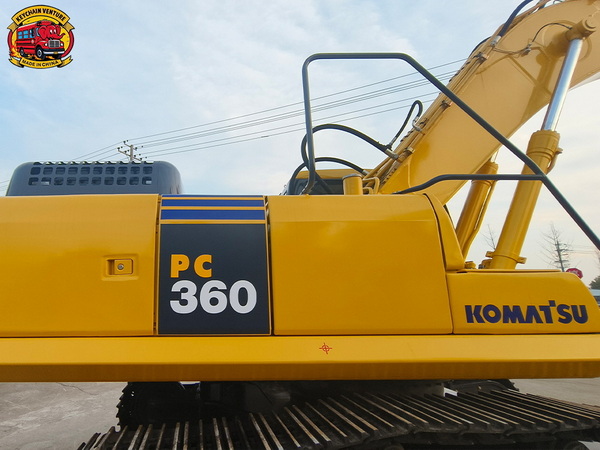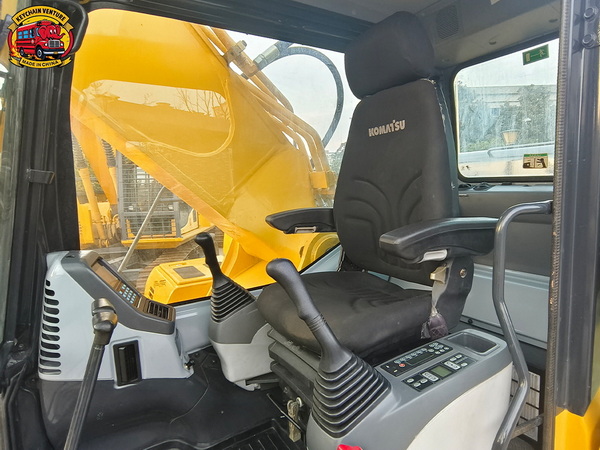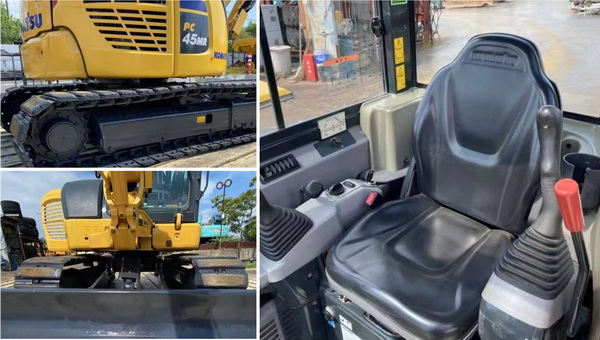Views: 222 Author: Amanda Publish Time: 2025-11-04 Origin: Site








Content Menu
● Foundations of excavation sheeting
>> Key materials and system options
● How excavation sheeting fits into the workflow
>> Site assessment and design considerations
>> Installation sequence and operations
>> Safety, quality, and environmental considerations
>> Urban infrastructure and utilities
>> Foundation and basement construction
>> Water-adjacent and coastal works
>> Environmental and land reclamation projects
● Integrating Used Excavator equipment
>> Value proposition and cost considerations
>> Safety and training with pre-owned equipment
● Best practices and lessons learned
>> Pre-project planning and risk management
>> Quality assurance during installation
● Case perspectives and practical drawings (conceptual)
>> Urban utility corridor retrofit
>> Basement excavation in a flood-prone region
>> Waterfront wall rehabilitation
● Practical checklist for project leaders
● FAQ
>> 1. How do I decide between steel, timber, and concrete sheet piling for a given project?
>> 2. What are common bracing options used with excavation sheeting?
>> 3. How can safety be ensured when using Used Excavator equipment for pile driving?
>> 4. What maintenance practices maximize the lifespan of sheet piles and interlocks?
>> 5. Are there environmental considerations when applying excavation sheeting in urban areas?
Excavation sheeting serves as a cornerstone of safe and efficient earthworks across diverse construction environments. Whether in crowded urban centers, flood-prone sites, or waterfront projects, sheet piling, trench sheets, and related temporary support systems enable engineers and crews to manage soil pressures, control groundwater, and protect adjacent infrastructure. This extended discussion builds on the core concepts of excavation support, detailing material choices, installation strategies, safety considerations, and practical workflows. It also highlights how integrating Used Excavator units into sheet-piling operations can deliver considerable value without compromising performance or safety. By examining application contexts, design considerations, and field best practices, readers gain a comprehensive view of why excavation sheeting remains indispensable in modern construction.

- Soil retention and wall stability: Sheet piling creates a continuous barrier that contains soil and prevents lateral movement during digging. This containment is especially crucial in deep excavations, soft soils, or locations with high lateral earth pressures.
- Groundwater management: In many projects, groundwater presents a persistent challenge. Sheet piles form cofferdams and water barriers that facilitate dry work zones or controlled dewatering, accelerating progress and reducing risk.
- Protection of nearby assets: Proximity to utilities, roadways, or adjacent structures means even small ground movements can trigger failures or disruptions. Sheeting mitigates these risks by restraining soil and water pressures at the workface.
- Temporary formwork and structural support: Beyond earth retention, sheets can serve as formwork or enclosure boundaries for temporary workflows, helping to shape pours, protect workers, and delineate work zones.
- Steel sheet piling: Steel sheets offer high strength, durability, and reuse potential. They perform well under significant loads and are common in deep excavations and heavy-duty retaining walls.
- Timber sheet piling: Timber sheets are typically chosen for lighter excavations, shorter durations, or settings where environmental considerations discourage metal use. They're easy to install but limited by moisture and decay resistance.
- Concrete sheet piling: Precast concrete sheets deliver rigidity and excellent water resistance, often used in waterfront or underwater scenarios where chemical exposure or long-term durability is a priority.
- Composite and modern alternatives: Composites and advanced polymers can provide corrosion resistance with reduced weight, suitable for sensitive sites or where traditional materials pose challenges.
- Soil and groundwater profiling: Engineers analyze soil stratification, groundwater levels, and potential vibration or load impacts to select the appropriate sheet material, interlock system, and bracing strategy.
- Interlock and connection design: The performance of a sheet-piling system hinges on interlocks, alignment accuracy, and watertight connections. Specifications typically cover sheet thickness, depth of drive, and required bracing.
- Mobilization and staging: Equipment, sheets, bracing, and dewatering systems are prepared and delivered to the site in a coordinated plan that minimizes downtime.
- Sheet installation and driving method: Driving sheets into the ground forms a continuous wall. Proper alignment and care during interlock engagement are essential to ensure wall integrity and leak control.
- Bracing, ties, and stability checks: Temporary bracing or tie-backs are deployed to counter residual earth pressures, with periodic checks to verify that the wall remains plumb and effective during excavation.
- Dewatering and water management: Where groundwater intrudes during digging, pumps and drainage channels are used in combination with cofferdams to maintain workability and safety.
- Post-excavation handling: After subsurface work, sheets may be removed or incorporated into permanent structures, depending on project design and contractor preference.
- Worker protection and training: Safe practices include equipment lockout/tagout, fall protection, and clear access routes. Training emphasizes correct handling of sheet piles, bracing operations, and emergency procedures.
- Structural and geotechnical checks: Continuous assessment of soil conditions, wall deflection, and bracing performance helps prevent unexpected collapses and ensures compliance with design specifications.
- Environmental safeguards: Dewatering discharge, sediment controls, and noise and dust mitigation are integrated into the workflow to minimize site impact and regulatory concerns.

Sheet piling is a trusted solution for trenching utilities such as water mains, sewers, and electrical conduits in densely built environments where surface disruption must be minimized.
Deep excavations for basements benefit from a robust sheet-piling wall with bracing, enabling clean and well-sequenced pours while protecting neighboring structures.
Waterfront projects, flood defenses, and harbor works rely on sheet piling to resist hydrostatic pressure, enabling staged construction in challenging conditions.
In land reclamation or slope stabilization, trench sheets and related systems help sculpt stable elevations and prevent erosion.
- Budget-friendly deployment: Reusing or repurposing reliable Used Excavator units can significantly reduce capital outlay while maintaining adequate performance for pile driving, trimming, or material handling tasks.
- Lifecycle considerations: Assessing maintenance histories, component wear, and availability of spare parts is essential to ensure uptime and safe operation during sheet-piling work.
- Compatibility and attachments: Pile-driving tools, vibratory hammers, and hydraulic breakers must be compatible with the machine's hydraulic system, breakout force, and reach to avoid overloading or inefficiency.
A rigorous inspection regime, preventive maintenance schedule, and operator training tailored to sheet-piling tasks are critical. Clear SOPs for startup checks, backup procedures, and emergency shutoffs reinforce safety on site.
A comprehensive plan that covers soil conditions, groundwater scenarios, sequence planning, and contingency measures reduces the risk of delays or safety incidents.
Regular checks of sheet alignment, interlock integrity, bracing tension, and watertight connections ensure a robust wall and minimize rework.
Coordinated logistics between sheet deliveries, bracing assembly, and equipment availability ensures steady progress and efficient use of crews and machinery.
Proactive wastewater management, dust suppression, and noise controls help projects meet environmental obligations and community expectations.
In a dense city block, steel sheet piles formed a continuous wall to enable trenching for multiple utility lines while maintaining traffic flow and pedestrian safety. The project leveraged a mix of new and Used Excavator units to balance budget and performance, with bracing staged to minimize disruption.
A cofferdam approach with steel sheets and active dewatering allowed dry working conditions, simplifying concrete pours and enabling a timely foundation set. The operation relied on precise alignment and a well-defined bracing plan to handle groundwater variability.
A combination of steel and composite sheets provided corrosion resistance and reduced weight, supporting efficient excavation and backfilling with minimal downtime for the site.
- Confirm soil stratigraphy, groundwater levels, and nearby structure loads
- Select sheet-piling materials and interlock systems appropriate to site conditions
- Plan bracing or tie-back strategies with safety margin considerations
- Schedule dewatering and water control measures
- Coordinate equipment and crew with realistic installation sequences
- Inspect sheet interlocks, bracing, and alignment regularly
- Manage logistics for timely material delivery, removal, and backfilling
- Ensure safety training and compliance for all personnel, including operators of Used Excavator assets
Excavation sheeting remains a foundational technology for safe, efficient, and cost-effective earthworks. By combining robust materials, well-designed temporary works, and disciplined site practices, projects can achieve reliable performance across urban, industrial, and coastal contexts. Integrating Used Excavator units into sheet-piling workflows creates meaningful value when matched with proper maintenance, compatible attachments, and thorough safety training. With ongoing attention to design accuracy, installation quality, and environmental stewardship, contractors can deliver outcomes that meet deadlines, budgets, and safety targets while preserving site integrity and progressing critical infrastructure.

- Steel offers high strength for deep excavations and high-load scenarios; timber is suitable for light, short-duration works or sensitive environmental contexts; concrete provides rigid, water-resistant performance where long-term durability and watertightness are priorities.
- Temporary cross-bracing, rakes, struts, and tie-backs are typical, chosen based on soil type, wall depth, and anticipated loads. Bracing ensures wall stability during excavation and can be adjusted as conditions evolve.
- Conduct comprehensive pre-use inspections, verify maintenance history, ensure attachments are compatible, train operators in pile-driving procedures, and implement strict start-up and emergency procedures. Regular on-site audits help sustain safe operations.
- Inspect interlocks for wear, keep corrosion control measures in place, perform timely repairs or replacements, and avoid over-ambitious reuse cycles without assessing structural capability. Documented inspection histories support ongoing reliability.
- Yes. Dewatering management, sediment control, and noise and dust suppression are essential. Proper planning minimizes disruption to nearby residents and businesses and ensures compliance with local environmental regulations.
[1](https://hindustanrmc.com/sheeting-in-construction-a-comprehensive-guide/)
[2](https://www.escsteel.com/post/features-and-advantages-of-using-trench-sheets)
[3](https://patriotdirt.com/excavation-sheeting-securing-your-construction-site-with-confidence/)
[4](https://indepthex.com/what-is-sheeting-and-shoring-in-excavation-and-how-are-they-used/)
[5](http://nucor.com/newsroom/intro-to-steel-sheet-piling-applications-and-benefits-in-construction)
[6](https://www.nucorskyline.com/utilitynav/blog/nucor-skyline-blog/2024/10/temporary-sheet-piling)
[7](https://www.escpile.com/single-post/2020/03/24/sheet-pile-types-and-applications)